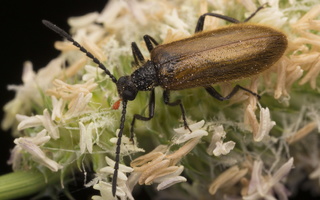- sort orderDefault
Photo title, A → Z
Photo title, Z → A
✔ Date created, new → old
Date created, old → new
Date posted, new → old
Date posted, old → new
Visits, high → low
Random
 home / Insecta · vabzdžiai / Coleoptera · vabalai / Tenebrionidae · juodvabaliai
home / Insecta · vabzdžiai / Coleoptera · vabalai / Tenebrionidae · juodvabaliai
creation date / 2015 / Week 29

- darkling beetle
- Schwarzkäfer, Dunkelkäfer
- juodvabaliai
- melnuļu dzimta
- czarnuchowate
Tenebrionid beetles occupy ecological niches in mainly deserts and forests as plant scavengers. Most species are generalistic omnivores, and feed on decaying leaves, rotting wood, fresh plant matter, dead insects, and fungi as larvae and adults. Several genera are specialized fungivores which feed on polypores. Many of the larger species are flightless. Humans spread some species such that they have become cosmopolitan, such as Tribolium castaneum, the red flour beetle, which was spread through grain products.
The larvae, known as mealworms or false wireworms, are usually fossorial, heavily sclerotized and nocturnal. They may possibly be an important resource for certain invertebrates and small mammals. Adults of many species have chemical defenses and are relatively protected against predators. Adults of most species, except grain pests, have slow metabolisms, and live long lives compared to other insects, ranging from approximately six months to two years.
Alleculinae is a subfamily of Tenebrionidae.
Minta augaliniu maistu, grybiena, detritu. Kai kurios rūšys (milčiai) sinantropai, gadina maisto produktus. Lervos panašios į sprakšių lervas, ilgos, cilindriškos, gelsvos ar rudos, kietos. Turi 3 poras palyginti trumpų kojų. Galva išgaubta, jos priekinis kraštas tiesus. Suaugėlių juodvabalių kūno forma labai įvairi: nuo beveik rutuliškos (Diaperis) iki ištysusios, siauros (Corticeus). Dydis taip pat varijuoja nuo labai mažų (~1 mm) iki stambių (40 mm). letenos (tarsi) narelių skaičius 5-5-4 (priekinės, vidurinės, užpakalinės) (išskyrus Myrmechixenus gentį).

